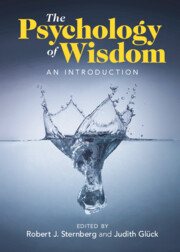Book contents
- The Psychology of Wisdom
- The Psychology of Wisdom
- Copyright page
- Contents
- Figures
- Tables
- Contributors
- Preface
- Part I Introduction to Wisdom Theory and Research
- Part II Foundations of Wisdom in the Individual and in the World
- Chapter 7 Wisdom, Creativity, and Intelligence
- Chapter 8 Wisdom, Morality, and Ethics
- Chapter 9 Wisdom, Personality, and Well-Being
- Chapter 10 The Wisdom in Emotions
- Part III The Modifiability of Wisdom
- Part IV Wisdom in the World
- Index
- References
Chapter 9 - Wisdom, Personality, and Well-Being
from Part II - Foundations of Wisdom in the Individual and in the World
Published online by Cambridge University Press: 26 May 2022
- The Psychology of Wisdom
- The Psychology of Wisdom
- Copyright page
- Contents
- Figures
- Tables
- Contributors
- Preface
- Part I Introduction to Wisdom Theory and Research
- Part II Foundations of Wisdom in the Individual and in the World
- Chapter 7 Wisdom, Creativity, and Intelligence
- Chapter 8 Wisdom, Morality, and Ethics
- Chapter 9 Wisdom, Personality, and Well-Being
- Chapter 10 The Wisdom in Emotions
- Part III The Modifiability of Wisdom
- Part IV Wisdom in the World
- Index
- References
Summary
This chapter describes three conceptions of wisdom as a personality quality: wisdom as integrative personality, wisdom as optimal personality development, and wisdom as a self-transcendent personality. Empirical evidence shows that wisdom defined and measured as a personality quality is consistently related to the Big Five personality traits and psychological and subjective well-being. Individuals with a wise personality tend to be emotionally stable, open to new experiences, agreeable, conscientious, and extraverted and to report greater psychological and subjective well-being. Two case studies were presented to illustrate the differences between a wise personality and a not-so-wise personality.
Keywords
- Type
- Chapter
- Information
- The Psychology of WisdomAn Introduction, pp. 135 - 156Publisher: Cambridge University PressPrint publication year: 2022
References
- 1
- Cited by

